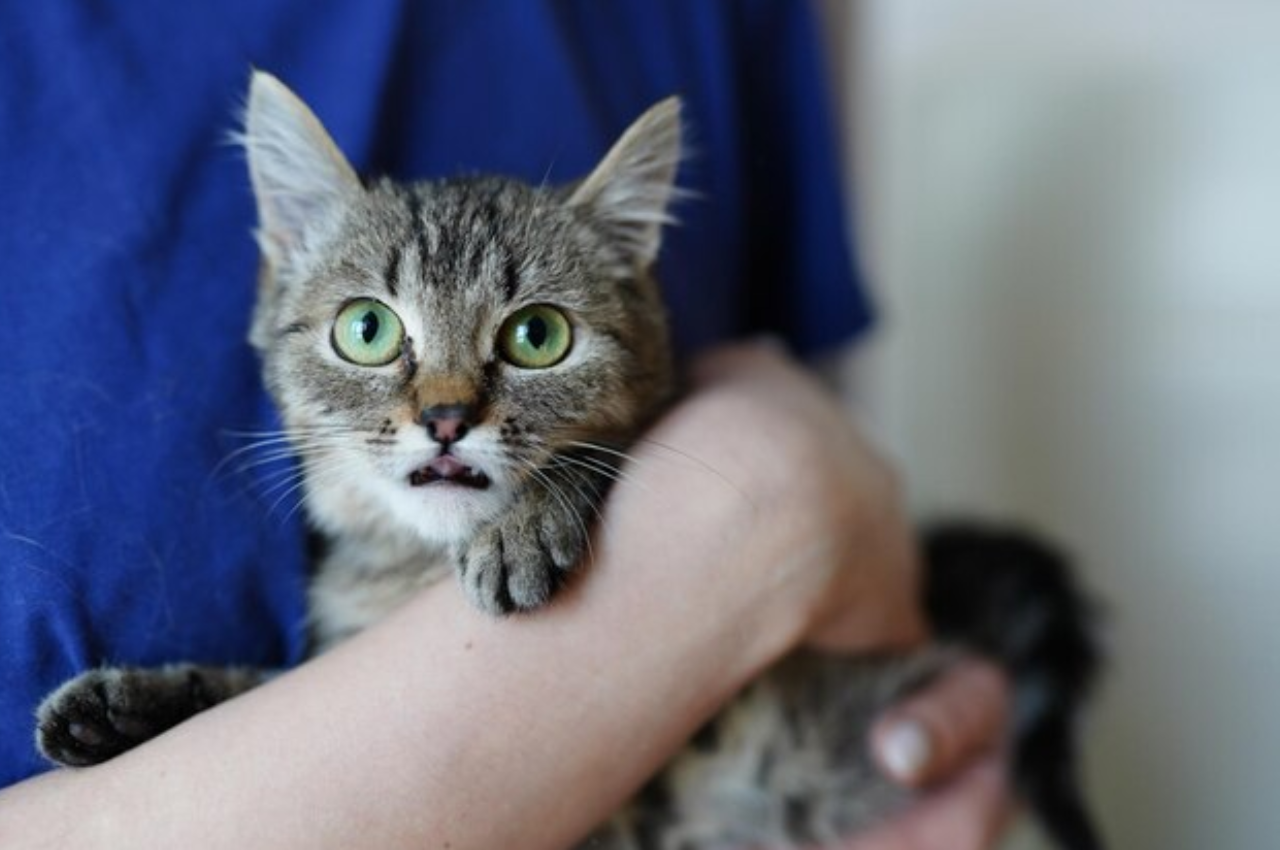Adopting a cat involves a careful process that includes researching, preparing your home, visiting shelters, completing adoption paperwork, and providing a loving and safe environment for your new feline friend. Cats make wonderful companions, and by following these steps, you can ensure a smooth and successful adoption experience.
Before bringing a cat into your home, it is essential to gather information about cat care, such as their dietary needs, grooming requirements, and common health issues. Once you have educated yourself, you can prepare your home by cat-proofing it and creating a comfortable space for your new pet. Visiting local shelters and rescue organizations will allow you to meet different cats and find the perfect match for your lifestyle.
After finding the right cat, you will need to complete the necessary adoption paperwork, pay the adoption fee, and provide the cat with a safe and secure environment filled with love, care, and attention.
Why Adopt a Cat
Adopting a cat offers numerous benefits, including providing a loving home to a pet in need and gaining a loyal companion. Cats are known for their affectionate nature and can bring joy and comfort into your life. Adoption helps reduce the number of homeless animals and supports animal shelters. Additionally, cats often require less maintenance compared to other pets, making them a great choice for many households. Choosing to adopt is a rewarding experience that positively impacts both the cat and the adopter.

Companionship Benefits
Adopting a cat can bring incredible companionship to your life. Cats are affectionate and loyal animals that can provide emotional support and unconditional love. They can help reduce feelings of loneliness and provide comfort during difficult times.
Shelter Overpopulation Issues
Adopting a cat from a shelter helps address the issue of overpopulation. By providing a loving home to a shelter cat, you are helping reduce the burden on animal shelters and contributing to the welfare of these animals.
Pre-adoption Considerations
When considering adopting a cat, there are several important pre-adoption considerations to keep in mind. These factors can help ensure that the adoption process is a success, and that both you and the cat will be happy in your new home. Here are some key things to think about before bringing a feline friend into your life.
Lifestyle and Space
Before adopting a cat, it’s crucial to consider your lifestyle and the space available in your home. Cats are independent creatures, but they still require attention, care, and space to roam and play. If you have a busy schedule or limited space, you may want to opt for a more low-maintenance breed or consider adopting an older cat. On the other hand, if you have a lot of space and time to dedicate to a pet, a playful and energetic kitten might be a good fit for your lifestyle.
Allergies and Health Concerns
It’s important to be mindful of any allergies or health concerns that you or your family members may have before adopting a cat. Some individuals may be allergic to cat dander, so it’s essential to spend time around cats to gauge any potential allergic reactions. Additionally, consider any existing health conditions in your household that may be impacted by the presence of a cat. By addressing these concerns beforehand, you can ensure a smooth transition for both the cat and your family.
Choosing The Right Cat
Choosing the right cat is a crucial step in the process of adopting a feline companion. Each cat has its own unique personality, age, and breed characteristics, so it’s essential to consider these factors to ensure a harmonious match between the cat and its new family.
Personality Matches
Understanding the personality of a cat is vital when choosing the right feline companion. Some cats are affectionate and social, while others may be more independent and reserved. Consider your own lifestyle and preferences to find a cat whose personality aligns with yours.
Age and Breed Factors
Age and breed are significant factors to consider when adopting a cat. Kittens are playful and require more attention, while older cats may be calmer and less energetic. Additionally, different breeds have unique characteristics and care requirements, so it’s important to research and choose a breed that matches your lifestyle and living situation.
Preparing Your Home
Prepare your home by creating a cozy space with toys, beds, and scratching posts for your new cat. Set up a litter box, food and water bowls, and schedule a vet visit for vaccinations and a health check. Welcome your feline friend with open arms!
Creating a Safe Space
When bringing home a new cat, it’s important to create a safe and comfortable space for them to adjust to their new surroundings. This can be achieved by setting up a designated room or area for your new furry friend. Ensure the space is quiet, away from high traffic areas and has enough hiding spots for the cat to feel secure. Additionally, remove any potential hazards such as loose cords, toxic plants, and fragile items.
Essential Supplies
Before bringing your new cat home, it’s important to have all the necessary supplies. This includes a litter box, litter, food and water bowls, high-quality cat food, toys, scratching post, and a comfortable bed. Ensure the litter box is in a quiet and easily accessible area for the cat, and the food and water bowls are placed in a separate area away from the litter box.

Cat proofing Your Home
Cats are curious creatures and can easily get into trouble if your home is not cat-proofed. To prevent any accidents, ensure all windows and doors are securely closed, and screens are in place. Keep any small objects, medications, and cleaning supplies out of reach. Also, consider covering any exposed wires with cord covers to prevent chewing.
In conclusion, preparing your home for a new cat is an important step towards ensuring their safety and comfort. By creating a safe space, having essential supplies, and cat-proofing your home, you can provide a welcoming environment for your new furry friend.
The Adoption Process
The cat adoption process involves filling out an application, meeting the cat, and completing an adoption contract. Potential adopters should be prepared for a home visit and adoption fees. It’s important to provide a loving and safe environment for the new feline family member.
Screening and Paperwork
- Shelters require an application and vet references.
- Proof of pet-friendly housing may be needed.
- Background checks are standard for applicants.
Meeting Potential Cats
- Visiting the shelter to interact with cats available.
- Observe behaviors to find a good match.
- Some shelters offer trial periods for adoption.
Post Adoption Care
After adopting a cat, post-adoption care involves providing a safe environment, regular veterinary check-ups, proper nutrition, and plenty of love and attention. Additionally, it’s important to gradually introduce the cat to its new home and establish a routine to help them feel secure and comfortable.
Congratulations on adopting a new cat! Now that you have brought your new furry family member home, it’s essential to provide them with proper post-adoption care. This care includes regular veterinary visits, proper nutrition and feeding, and ensuring your cat feels comfortable and safe in their new environment. In this post, we’ll discuss each of these topics in more detail.
Veterinary Visits
Regular veterinary visits are crucial for your cat’s health and wellbeing. Schedule a check-up with a veterinarian within the first few weeks of bringing your new cat home. The veterinarian will examine your cat, update their vaccinations, and check for any underlying health issues. Depending on your cat’s age, health, and lifestyle, your veterinarian may recommend additional tests or procedures such as bloodwork, fecal testing, or dental cleanings. It’s essential to follow your veterinarian’s recommendations to ensure your cat stays healthy and happy.
Nutrition and Feeding
Proper nutrition is essential to keep your cat healthy and happy. Feed your cat a high-quality, balanced diet that is appropriate for their age, weight, and activity level. Avoid feeding your cat table scraps or human food, as this can lead to obesity and other health issues. Make sure your cat has access to clean, fresh water at all times. Consider feeding your cat on a regular schedule and using puzzle feeders or food-dispensing toys to provide mental stimulation and prevent overeating.
Proper post-adoption care is essential to ensure your cat stays healthy and happy. Regular veterinary visits, proper nutrition and feeding, and creating a safe and comfortable environment are all crucial aspects of post-adoption care. By following these tips, you can provide your new furry family member with the best possible care.
Socialization and Training
Adopting a cat involves socialization and training to help them adjust to their new environment. It includes introducing them to family members, providing a safe space, and teaching them litter box usage and basic commands. Consistency and patience are key in helping your new feline companion feel comfortable and secure in their new home.
Cats are adorable pets that bring joy and companionship to their owners. However, adopting a cat requires a lot of effort, especially when it comes to socialization and training. Socialization is the process of familiarizing your cat with its environment, while training involves teaching your cat how to behave appropriately. Here are some essential aspects of socialization and training that you should consider when adopting a cat.
Litter Training
Litter training is an essential aspect of cat training. You need to ensure that your cat knows where to do its business. Start by placing the litter box in a location that’s easy for your cat to access. Show your cat where the litter box is and encourage it to use it. If your cat still doesn’t use the litter box, try using a different type of litter or placing the litter box in a different location.
Behavioral Tips
Cats have unique personalities, and their behavior can be challenging to understand. However, with the right training, you can teach your cat to behave appropriately. One of the best ways to train your cat is through positive reinforcement. Whenever your cat behaves well, reward it with treats or praise. If your cat misbehaves, avoid punishing it, as this can lead to fear and aggression. Instead, redirect its behavior and offer positive reinforcement when it behaves well.
In conclusion, adopting a cat requires patience, dedication, and effort. Socialization and training are crucial aspects of cat ownership, and they require continuous effort. With the right training, you can teach your cat to behave appropriately and enjoy a happy and healthy relationship with your furry friend.
Long Term Commitment
Adopting a cat requires a long-term commitment, involving responsibilities like providing food, water, shelter, and regular veterinary care. Additionally, creating a safe and stimulating environment, offering love and attention, and being prepared for the cat’s potential lifespan of 15 years or more is essential.

Adopting a cat is a big decision and comes with a long-term commitment. Cats can live for up to 20 years, so it’s important to be prepared for the ongoing care and planning for the future of your feline friend.
Ongoing Care
Cats require daily care, including feeding, providing fresh water, and cleaning their litter box. Regular veterinary check-ups and preventative care, such as vaccinations and flea and tick treatments, are also necessary to ensure your cat stays healthy. In addition, cats need daily playtime and exercise to keep them mentally and physically stimulated.
Planning for The Future
It’s important to plan for the future of your cat, including finding a trusted pet sitter or boarding facility for times when you’re away. You should also consider the financial commitment of owning a cat, including the cost of food, litter, toys, and veterinary care. Additionally, it’s important to have a plan in place for emergencies and unexpected medical expenses.
In conclusion, adopting a cat is a wonderful decision that requires a long-term commitment to ongoing care and planning for the future. With proper care and attention, your feline friend can bring years of joy and companionship to your life.
Conclusion
Ensure your home is cat-ready and provide love, care, and a forever home. Adopting a cat is a rewarding experience that requires responsibility and commitment. By understanding the process and being prepared, you can welcome a new feline friend into your family with open arms.
